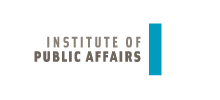Scenario #3
Free associations and prejudice barometer

Aims / objectives
The aim of this exercise is to recognise prejudices, own resentments and the possible consequences of them. The exercise should therefore encourage critical reflection, promote tolerance and help one to stand up against prejudice. It thus strengthens resilience against the stereotypes and devaluations that are dangerous for democracies.
Description of the method
The participants are shown pictures from advertising that depict various subjects with people of different ages, gender, skin colour, etc. These can be more or less implicitly judgmental pictures. In a first exercise, the participants should freely associate what comes to their mind about these pictures or the people depicted.
These associations are then discussed in the group (or in smaller groups) and checked for prejudices or stereotypes. In a second round, the participants evaluate which of these people is closest to them, could be their friend, and why. Again, the results are discussed. The intention is to deliberately develop a counter-position, so that strategies to combat prejudices are also practised in the discussion.
Overview
| Name of the method | Free associations and prejudice barometer |
| Target group | Youth and adults (from 13) |
| Duration | 1 hour |
| Spatial requirements | Workshop room with screen |
| Competences | Self-reflection, critical thinking, analytical skills, tolerance, intercultural competences |
| Objectives | Participants should get aware about their own prejudices and analyse where they come from and where they lead to; they should also learn how to counter prejudices in discussions |
| Method description | Participants give their impressions and associations to pictures of different people; then, they discuss their prejudices |
| Social work context | Can be used in groups with strong and open prejudices or help to make them more explicit; some formal requirements, like a room and a group to discuss |
| Preparation | Selection of pictures; preparation of questions; theoretical background for discussion of prejudices |
| Risks | Prejudices could be confirmed if they are not discussed; i.e. if many people in the group have similar associations; group should be heterogeneous. |
| concept / application | Presented by Reinhard Leonhardsberger of the association SOS Menschenrechte (SOS Human Rights) |
| References |
See other scenarios
Working with stories 1: The Lonely Duckling
Working with stories 2: Punch or Political puppet theatre
Deconstruction of Hate Speech
Extremism barometer (What is extreme?)
The District of Legends
Conspiracy video with youth “Le complot nouillles” (The Noodle conspiracy)
Text message to victims of hate speech
Argumentation training and countering hate speech – role play
Check our Partners




